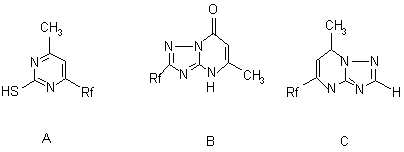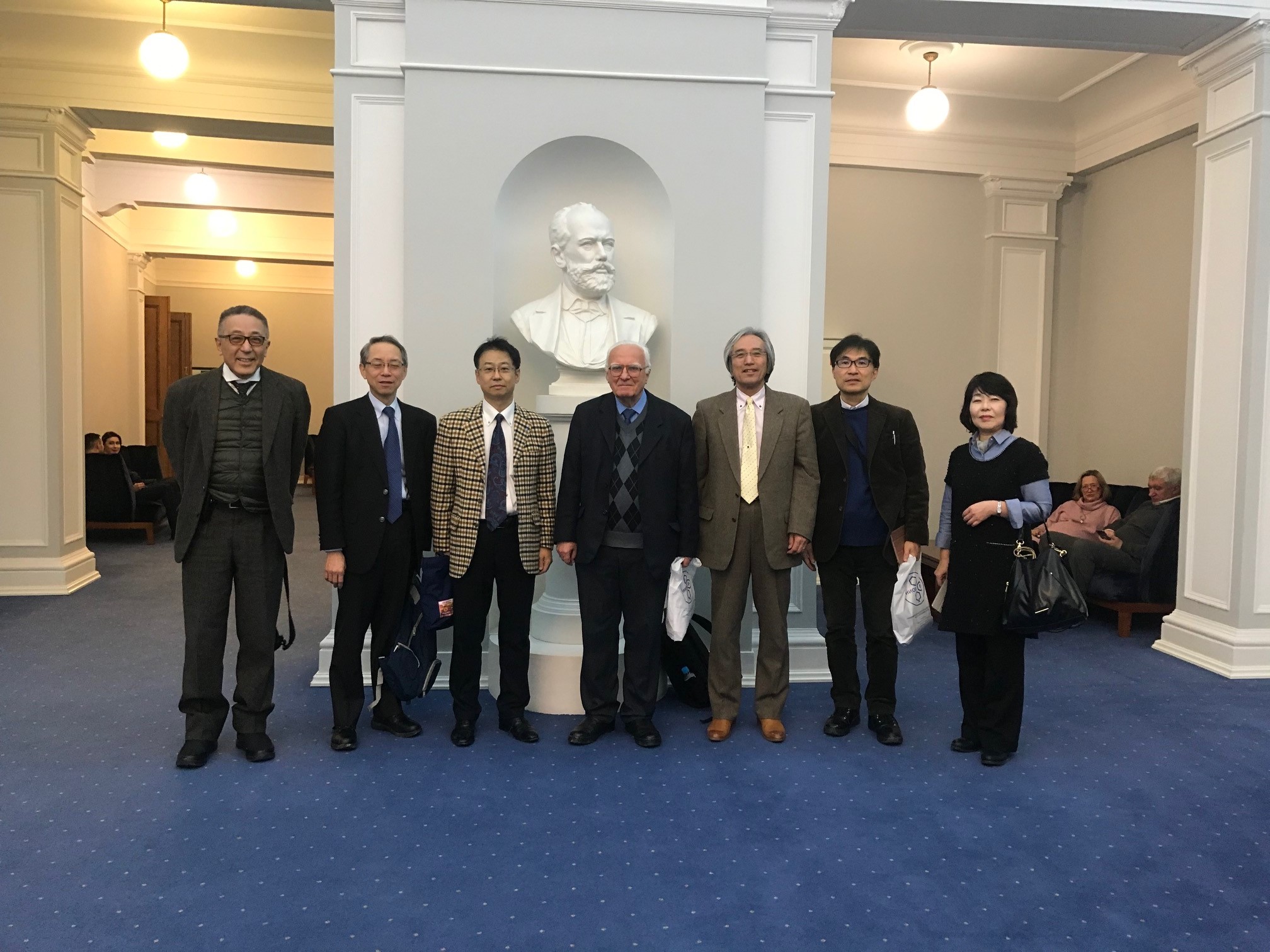Fluorine Notes, 2000, 12, 5-6
Antimicrobial activity of fluorosubstituted diazines and triazolodiazines.A.V.Karavaeva, L.A. Kossior, S.V.Vershilov, L.M. PopovaThe study of biological activity of fluorine-containing heterocyclic compounds is one of the most important directions of investigations of this class compounds [1-3]. To continue works [4,5] started earlier, we have carried out synthesis [6,7] and evaluation of antimicrobial activity of series of 6-perfluorosubstituted 2-mercapto-4-methylpyrimidines (compounds 1 and 2), 2-perfluorosubstituted 5-methyl-s-triazolo[1,5-a]pyrimidine-7-ones (3-5) and 5-perfluorosubstituted 7-methyl-s-triazolo[1,5-a]pyrimidine (6).
Rf = CF3 (5); C6F13 (2,3); CF(CF3)OC3F7 (1,4); CF(CF3)OCF2CF(CF3)OC3F7. Compounds 1-6 were tested in the following cultures: Bac.Cereus ATCC 10702; Ps. Aerogenosa ATCC 900027; E. Coili ATCC 25922 St. and Aureus 209-17. Table. Antimicrobial activity of fluorosubstituted diazines (1,2) and triazolodiazines (3,6)
To determine antimicrobial activity of synthesized compounds 1-6 the following methods were used:
The activity characteristics of the substances, diameter of growth suppression zone of the test-cultures Ds and minimal growth retarding concentrations Cmin are presented in the table. The check standard is the solvent (ethanol). Thus, as it follows from the mentioned experimental data, investigated perfluorosubstituted diazines (1,2) and triazolodiazines (3-6) show antimicrobial activity in three cultures except E.Coli. Triazolopyrimidines (3,4 and 6) display distinct antimicrobial activity towards G+ microorganisms, that is obviously connected with the cell shell structure [8]. References
|
|||||||||||||||||||||||||||||||||||||||
Fluorine Notes, 2000, 12, 5-6

